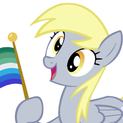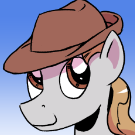About This Club
The goal of this club is to create a supportive and inclusive space for members to connect, share experiences, and foster a sense of community.
- What's new in this club
-
Rusty Strings joined the club
-
1. Who Are You? I'm Magic Note. I'm pan/demi romantic who's also on the ace spectrum. I'm disabled and in my 30s and I'm autistic. 2. Your Journey For decades, I've been having trouble with my sexuality because it was difficult to find where I was. I've had crushes on people of different genders, mainly men. I've been mostly lurking on the internet and trying to find good resources. It wasn't until recently I found out where I was sexuality wise. 3. Interests and Passions Video games and game making/modding! The latter's difficult because it's difficult to keep motivated because it takes so little to lose motivation. 4. What Are You Looking Forward To? Let's see...I'm looking forward to starting anew (again) and hoping to find new friends. 5. Fun Fact I can remember things from years ago that are obscure! ---- I hope to make new friends in this community! Sorry I'm not good with introductions.
-
Rebel the Wolfgirl joined the club
-
mimibbyy joined the club
-
Magic Note joined the club
-
river the creek joined the club
-
Just wanted to take a moment to wish everyone from this lovely community a wonderful holiday season with your loved ones! I hope that everyone makes beautiful memories together as we head into the new year. Remember if you ever feel alone or need someone to talk to, please don't hesitate to reach out. You are all so amazing, so let your light shine bright this holiday season! Happy Holidays! - Starlight
-
MaxLoveless08 joined the club
-
TailsLolz joined the club
-
LilAntwanP joined the club
-
Hello everyone, I hope you are all doing well. I just wanted to take a moment to give you a quick update and share some thoughts. First, I would like to apologize to everyone for my absence and for not posting anything in a while here. I have been very disorganized with all my personal projects in the past few months. Life has been hectic as I'm currently in the final stretch of my last semester at university. I'm on track to graduate next month, which is very exciting but also very overwhelming. On top of this, I've had a few new developments that I have not shared with anyone as of yet. Although I have not been able to spend as much time here as I would like, I still visit the forums from time to time. I truly miss everyone. For the newcomers here: When I created my initial batch of discussion posts, my goal was to help and provide everyone here with a better understanding of the different sexualities on the spectrum. The more recent posts regarding sharing LGBT+ reads and introductions have been wonderful to read! I was touched by the incredible and heartwarming stories that some of you lovely people have shared with us. I would like to take the opportunity to welcome and encourage all the newcomers to our little community here to write your stories and experiences! I would love to hear more about your stories and experiences about how you all came to be here. Your unique stories and experiences are what make this place so special. I created this club with the intention of helping others feel seen and valued. There are so many awesome people in this community! Everyone in this community makes a contribution in their own special way, whether it is big or small. Your life is much more awesome and beautiful than you could ever imagine. For transparency reasons, I would like to remind all users that for all my previous posts, that I did use Copilot AI to help restructure and format my words for clarity and organization. My intention was to simply make the information in the posts more accessible for readers. The forums guidelines currently allow for the use of AI in posts as long as you are transparent about its use. However, I do want to note that as over a month ago (or maybe it's two months ago now lol) that I stopped the use of AI altogether as I would like to be more upfront with people and improve my writing. I realized that sometimes I get too passionate and type up a wall of text that does seem to scare off people, but it's a work in progress as you can see! All the words and content that I have written are based on my personal knowledge and sources that I have come across over the years. I try to share common misconceptions, questions, and online databases, that attempt to clarify any questions someone might have and especially encourage users to go out and conduct more research on a topic they would like to learn more about. For example, I recall having a user here reaching out regarding questions on the asexuality spectrum. They had questions on some things that I had very little knowledge on. We checked out some asexuality resources online and what we both learned was very eye opening for them. We both learned something new that day and I helped them become one step closer to finding out who they really are. They were so happy. Over the past several months, I found out that I ended up helping a lot of people which really touched my heart. This has begun to formulate the idea in my head, that perhaps one day I would like to create a "one-of-a-kind" LGBT+ resource that is more comprehensive and accesible for everyone. I would like to thank you for your understanding and for being so freaking awesome! I'm looking forward to catching up with everyone and reading more of your wonderful stories. Your friend, Starlight Serenade
-
Tira Daffodil joined the club
-
Dior joined the club
-
PepperPie joined the club
-
1. Who Are You? I’m Dylan and I use he/him pronouns. I’m a whole 25 years old. Which “feels” old, I feel like I’ve been around forever, mentally at least. Physically I still feel like a teenager. I’m bisexual and am probably somewhere on the ace spectrum but I’m not really 100% certain about that. 2. Your Journey I can’t remember if I’ve posted it on the forum here before or not, so I might be repeating myself. Around 12 is when I started to question my sexuality, at least in some regards. I wouldn’t call it a full on “Am I gay?” questioning, more, “do other people feel this way about the same sex?”. That was sort of the question that grabbled me through all of high school in varying degrees. Because I knew I was attracted to women, but I also had similar feelings for men. So what’s that make me? Bisexual, it would turn out. I had sort of started to come to terms with being bisexual once I was in my later teen years. Internally, at least. I wasn’t out in anyway by this point. I wouldn’t really call my high school environment a conductive one for exploring my sexuality, so until I graduated and went to college I never really had the chance to date other men. In college I’d finally have the chance to explore my sexuality without any potential fear of stigmatization or retaliation from my parents. Hot having that fear over my head was liberating. Physically and mentally. I finally got to date other men. In my mind I was able to see if was “really bisexual” by doing so. Which, yes, I was. My first date wasn’t really anything spectacular, but it, along with future dates and other experiences put the idea of me “not really being bisexual” firmly out of my mind. Which, for me, was what lead to me deciding to be openly bisexual among my classmates and friends. Which went very well, most people in college tend to be very open thankfully. I would eventually come out to my parents and siblings a few years later, after having had a few boyfriends by that point. At the time I had a boyfriend who I really thought was the one (he wasn’t lol) so I decided that was as good of time as any to tell them. It went okay. My dad took it well, which I expected honestly, he’s always been more accepting of things like that than my mom. Siblings didn’t care. My mom did not take it well to say the least and she broke down when I told her and she didn’t talk to me for over a week. Very rough to say the least, I do not like thinking back on those memories. She would eventually come around and accept me. But that entire interaction still weighs very heavily in my mind 3. Interests and Passions Well since it’s October I guess I’ll lead by saying I’m a big fan of bats! One of my dreams is to move to Australia and volunteer to work for one of the mega bat sanctuaries there. I really do like animals in general, too. I’m a big music fan. It’s without a doubt the form of media I consume the most of. Indie and indie folk are probably my most listened to genres, but I really do listen to a wide range of artists. Lately I’ve been really into Magdalena Bay’s latest album which is basically a perfect project if you ask me. I’m also a huge Elliott Smith fan, he’s without a doubt my favorite artist. Just an absolutely amazing musician. I enjoy writing as well. I’ve posted some MLP related fan fics before. And wrote a whole real long story for a game I never finished a few years ago. I play video games as well. Lately it’s been Rimworld, before that it was Equestria at War which is a total conversion mod for Hearts of Iron IV. I adore that mod, amazing writing, and it introduced me to one of my all time favorite characters, Posada (who’s also canonically bisexual). I’m also a big football fan, by far my favorite sport. Go Detroit Lions! 4. What Are You Looking Forward To? Besides the weekly NFL games, not a ton really. I guess a new episode of TYT comes out this week but it being cancelled has completely killed my vibes when it comes to watching it. Now it just feels like I’m watching something I used to look forward to slowly die. There is the new Dragon Ball game that I’m looking forward to at least. There’s also a new naval strategy game coming out in November that I’m likely going to pick up as the early access footage looks really fun. 5. Fun Fact 3 of my all time favorite characters are moon related, those 3 being Rei Ayanami, Princess Luna, and Lunar Princess Ranni. My favorite G5 character also has moon in her name, Izzy Moonbow. Also, here’s a blank template for those who might want it when posting. 1. Who Are You? 2. Your Journey 3. Interests and Passions 4. What Are You Looking Forward To? 5. Fun Fact
-
Iforgotmybrain joined the club
-
jppwatch joined the club
-
Crimsonwaters joined the club
-
YGSilverstream joined the club
-
1. Who Are You? Hi! My name is Erica, my pronouns are she/her, and I'm currently in my late 20s. I'm a trans woman, I'm panromantic, and I'm on the ace spectrum. 2. Your Journey My journey started... very young. I didn't know I was trans until I was around 17, but that was only because from as young as I could remember, I just assumed that everyone wanted to be a girl. I also... didn't realize that it was "unusual" to not differentiate romantic feelings based on gender until I was 8 or so, and I kissed a boy, and got kicked out of a homeschool group for it. I grew up very repressed, I was constantly trying to convince myself that I was "normal", and that everyone had these thoughts. After all, why would the pastors be preaching so hard against them if they weren't common desires? It took me until 17 to realize that I either was trans and bisexual, or that god just didn't like me, and was being really mean for no reason, and... I no longer wanted to worship that god, so I embraced my bisexuality. My transness though... It took until I was about 22 to actually buy gender affirming clothes (yes, it was a skater skirt and a pair of programing socks, don't judge) and still LONGER to actually get the courage to go out as myself. Because of my living situation and financial situation, going to school full time and working low paying jobs to afford it, I wasn't able to save up enough money to move out until last year. I was planning on just "living my life on the weekends", and not taking any steps to transition, I thought I could "tank" dysphoria and just... not let it bother me. That was a mistake. After two close calls and a very bad decision, I knew I HAD to transition, or I wouldn't be around anymore. I started HRT last year, and I came out to my family earlier this year (most of them, 2 of my siblings had known since my early 20s). I'm presenting fem basically full time now, and I'm feeling so, so much better about myself and my life, I really feel that starting hormones, coming out, and presenting myself the way I feel saved my life, and I am so glad I'm having the opportunity to live my life as myself. 3. Interests and Passions Gosh, I have a LOT of interests, for one, I love to write! I'm a slow writer sometimes, but not because I'm not writing, but because I keep having new ideas that I just have to get out and the stuff I'm in the middle of writing takes a backseat. I also love to read, I try to read at least two books a week, one novel, and one comic book. I'm reading a lot of queer fiction right now, and it's really making me feel seen and heard in a way that most forms of media just doesn't. I also enjoy collecting things! I really like dolls, fashion dolls especially, and I am always looking for new and unique ones! I also collect records, plushies, video games (although I haven't played much lately), and, of course... books! I'm trying to get into more tabletop games, I've been playing TTRPGs off and on most of my life, and I want to get back into that, but I'm also maybe trying to get into a TCG or Warhammer too, to try and find a community. I also play FFXIV, in the NA server Goblin, on PC, and while I only pop on once a week or so, I really really love getting to run around as a lala for a few hours, let my troubles slip away. If you play, lmk! I'm only partway through the first expansion, but I'm going to try and go through it a bit faster, so hopefully we'll be able to play even if you're done with all the MSQs 4. What Are You Looking Forward To? You know, there's usually a big event I'm planning, something like a con, or a party, but at this moment, I don't think I have anything big planned, I was planning on going to a convention next year, and I've been trying to make friends who are also going, so I think that counts! 5. Fun Fact Fun fact... Hmmmmm..... Well, I don't know which of my habits are "quirky", but do like to put ketchup and pickles on curry, and I've been told that's a travesty, so maybe that? ~ I look forward to meeting all of you and getting to be good friends, thank you for having me!
-
DebonedAngel joined the club
-
Sophie joined the club
-
BlueberryShiver joined the club
-
XXX_S3RL joined the club
-
I'd like to recommend 《The Sunbearer Trials》by Aiden Thomas; here's the summary: Teo, the seventeen-year-old trans son of the goddess of birds, isn’t worried. As a Jade, it’s unlikely he’ll be chosen to compete in the Trials, and even if his best friend Niya competes, she’s a born-and-bred Gold semidiós with unparalleled abilities. But for the first time in over a century, Sol chooses not one, but two Jade competitors: Teo – and Xio, the thirteen-year-old child of the god of bad luck. With the odds stacked against them, Teo is determined to get himself and his friends through the trials unscathed – for fame, glory, and their own survival.
-
hanguangjun joined the club
-
Starglitch joined the club
-
Introduction Understanding lesbianism, defined as the romantic and/or sexual attraction between women, goes beyond simply recognizing it as a sexual orientation; it involves appreciating the rich tapestry of experiences, histories, and cultural contributions that shape it. This blog post aims to illuminate the significance of lesbian identity by delving into its historical roots, celebrating influential figures in media, and exploring the symbolism behind the lesbian flag. We will also discuss lesbian literature, music, and art, address common questions and misconceptions, and provide valuable resources for support and community. Whether you’re part of the lesbian community or an ally, join us in embracing the diverse and resilient narratives that foster a deeper understanding and appreciation of lesbian lives. The History of Sapphic Love: A Deeper Dive The history of lesbianism is a tapestry woven with stories of love, resistance, and resilience. The term "lesbian" originates from the Greek island of Lesbos, home to the ancient poet Sappho, who is often celebrated for her lyric poetry expressing love between women. Sappho's works, though fragmented, have inspired generations of women who love women, giving rise to the term "Sapphic love." Throughout history, lesbian relationships have often been hidden due to societal norms and legal restrictions. However, women have always found ways to express their love and form communities. In the early 20th century, lesbian bars and social clubs provided safe spaces for women to connect, while the feminist and gay liberation movements of the 1960s and 1970s brought greater visibility and advocacy for lesbian rights. The Lesbian Flag: Colors and Symbolism The lesbian flag, a symbol of pride and solidarity, has undergone several iterations. The most widely recognized version today features shades of orange, pink, and white. Dark Orange: Represents gender non-conformity. Orange: Symbolizes independence. Light Orange: Denotes community. White: Represents unique relationships to womanhood. Light Pink: Represents serenity and peace. Pink: Stands for love and sex. Dark Pink: Symbolizes femininity. The flag is a visual representation of the diversity and strength within the lesbian community, celebrating both individual identities and collective unity. Prominent Lesbian Figures in Media Lesbian representation in media has evolved over the years, from coded characters to openly lesbian protagonists. Here are ten real-life figures and ten fictional characters who have made significant contributions: Real-Life Lesbian Figures Audre Lorde: A poet, essayist, and activist, Lorde's work explored the intersections of race, gender, and sexuality, making her a pivotal figure in feminist and civil rights movements. Ellen DeGeneres: A comedian and television host, DeGeneres made history by coming out on her sitcom Ellen in 1997, paving the way for greater LGBT+ visibility. Gertrude Stein: An influential writer and art collector, Stein's works and relationships have left a lasting impact on literature and the arts. Martina Navratilova: A tennis champion and advocate for LGBT+ rights, Navratilova has been an outspoken voice for equality in sports. Sara Gilbert: An actress and producer, Gilbert is known for her role on Roseanne and her advocacy for LGBT+ rights. Wanda Sykes: A comedian and actress, Sykes is known for her sharp wit and activism within the LGBT+ community. Sappho: The ancient Greek poet whose work laid the foundation for the concept of Sapphic love. Alison Bechdel: A cartoonist and graphic novelist, Bechdel is known for her comic strip Dykes to Watch Out For and her memoir Fun Home. Lena Waithe: A writer, producer, and actress, Waithe is known for her work on Master of None and The Chi. Kristen Stewart: An actress and director, Stewart has been open about her sexuality and is known for her work in both indie and mainstream films. Prominent Lesbian Figures in Animated Media: Korra (The Legend of Korra) - As the protagonist of The Legend of Korra, Korra’s relationship with Asami Sato was groundbreaking in children’s animation, representing a major step forward for LGBT+ visibility. Garnet (Steven Universe) - Garnet, a fusion of two female-presenting gems, Ruby and Sapphire, represents a loving, committed lesbian relationship in the popular animated series Steven Universe. Adora and Catra (She-Ra and the Princesses of Power) - The series explores the complex relationship between Adora and Catra, culminating in a powerful portrayal of love and redemption. Amity Blight (The Owl House) - Amity’s relationship with Luz Noceda is a central part of The Owl House, offering a positive portrayal of young lesbian love in a fantasy setting. Harley Quinn and Poison Ivy (Harley Quinn) - Their relationship, depicted in the animated Harley Quinn series, highlights a complex and enduring bond between the two iconic characters. Pearl (Steven Universe) - Pearl’s love for Rose Quartz is a poignant part of her character arc, exploring themes of loss, identity, and devotion. Princess Bubblegum and Marceline the Vampire Queen (Adventure Time) - Their relationship, which developed over the course of Adventure Time, became an iconic representation of lesbian love in animation. Stevonnie (Steven Universe) - A fusion of Steven and Connie, Stevonnie embodies a non-binary identity and represents a unique exploration of gender and attraction in the show. Sailor Uranus and Sailor Neptune (Sailor Moon) - Their relationship, though often censored in international versions, was a pioneering depiction of lesbian love in anime. Velma Dinkley (Trick or Treat Scooby-Doo!) - This 2022 depiction of Velma confirmed her crush on a female character, finally canonizing a long-theorized aspect of her character. Expanding the History: Lesbian Literature and Music/Artists Lesbian Literature Books have long been a refuge for those seeking to explore and understand lesbian identity. Here are a few notable works: "The Price of Salt" by Patricia Highsmith: Published under the pseudonym Claire Morgan, this novel tells the story of a love affair between two women, notable for its happy ending. "Rubyfruit Jungle" by Rita Mae Brown: A groundbreaking novel that explores a young woman's journey to self-acceptance as a lesbian. "Stone Butch Blues" by Leslie Feinberg: This novel is a powerful exploration of gender identity and lesbian life in the mid-20th century. "Orlando" by Virginia Woolf: While not explicitly lesbian, Woolf's novel explores themes of gender fluidity and was inspired by her relationship with Vita Sackville-West. "Fun Home" by Alison Bechdel: A graphic memoir that explores Bechdel's relationship with her father and her journey of self-discovery. "The Well of Loneliness" by Radclyffe Hall: One of the earliest lesbian novels, it tells the story of Stephen Gordon, a woman who loves other women in a society that does not accept her. "Tipping the Velvet" by Sarah Waters: A historical novel set in Victorian England, it explores the life and loves of a young lesbian woman. "Zami: A New Spelling of My Name" by Audre Lorde: A biomythography that blends history, biography, and myth to explore Lorde's life and identity as a black lesbian. "Annie on My Mind" by Nancy Garden: A young adult novel that tells the story of two teenage girls who fall in love, one of the first of its kind. "The Miseducation of Cameron Post" by Emily M. Danforth: A coming-of-age story about a teenage girl sent to a conversion camp after being caught with another girl. Lesbian Music/Artists Music has also been a powerful medium for expressing lesbian identity and experiences. Some notable artists include: Melissa Etheridge: A rock singer-songwriter known for her raspy voice and candid lyrics about love and identity. Tracy Chapman: While not exclusively known as a lesbian artist, Chapman's music has resonated with many within the LGBT+ community. k.d. lang: A country and pop singer who has been open about her sexuality and has used her platform to advocate for LGBT+ rights. Syd: Former member of The Internet, Syd is a singer and producer known for her smooth vocals and open exploration of her sexuality in her music. Tegan and Sara: A Canadian indie-pop duo of identical twins who have been open about their sexuality and are known for their activism. Hayley Kiyoko: Often referred to as "Lesbian Jesus" by her fans, Kiyoko's music and videos celebrate lesbian love. Ani DiFranco: A folk singer-songwriter known for her politically charged music and activism, DiFranco has been an outspoken advocate for LGBT+ rights. Le Tigre: A feminist punk band led by Kathleen Hanna, Le Tigre's music often explores themes of sexuality and identity. Brandi Carlile: A country and folk singer-songwriter who has been open about her sexuality and has used her music to advocate for LGBT+ rights. Sia: While Sia has not publicly labeled her sexuality, her music and videos have resonated with many in the LGBT+ community. Common Questions and Misconceptions About Lesbianism Can lesbians be attracted to men? No, lesbians are exclusively attracted to women. However, sexual fluidity means some may experience changes in their attractions over time. Is lesbianism just a phase? No, lesbianism is a valid sexual orientation, not a phase. Do lesbians hate men? No, lesbians do not hate men; they simply aren't romantically or sexually attracted to them. Can a lesbian have male friends? Absolutely, sexual orientation does not dictate one's ability to form friendships with any gender. Do lesbians all dress or act a certain way? No, lesbians are diverse in their expressions of gender, style, and personality. Can lesbians be feminine? Yes, many lesbians embrace femininity, while others may identify as more masculine or androgynous. Is it easier for lesbians to come out than gay men? Coming out experiences vary greatly and can be challenging for anyone, regardless of gender. Do lesbians always have short hair? No, hair length has no bearing on one's sexual orientation. Are lesbian relationships more emotional than heterosexual ones? Emotional depth varies between relationships, regardless of the gender of the partners. Can a lesbian have children? Yes, lesbians can have children through various means, including adoption, surrogacy, and sperm donation. Are all lesbians political? While some lesbians are politically active, others may not be. Political involvement is a personal choice. Is there a hierarchy in the lesbian community? No, there is no formal hierarchy. The community is diverse and includes people of various identities and expressions. How does the experience of being a lesbian differ for those in different cultural or religious communities? The experience of being a lesbian can vary greatly depending on cultural or religious contexts, with some communities offering more acceptance and support than others, impacting individuals' experiences and challenges. Do lesbians face discrimination within the LGBT+ community? Unfortunately, yes. Lesbians may face sexism, racism, and other forms of discrimination within the broader LGBT+ community. Can a lesbian relationship have gender roles? Some lesbian relationships may have traditional or non-traditional gender roles, while others may reject roles altogether. Can a lesbian be attracted to someone who is non-binary? Yes, some lesbians may be attracted to non-binary individuals, as attraction can vary based on personal identity and experience. Can lesbians experience romantic but not sexual attraction to women? Yes, some lesbians may experience romantic attraction without sexual attraction, which can fall under the romantic spectrum. Are all lesbians butch or tomboyish? No, lesbians can be butch, femme, androgynous, or express themselves in any way that feels right for them. Can a lesbian be in a relationship with a trans woman? Yes, a lesbian can be in a relationship with a trans woman, as trans women are women. Do lesbians face pressure to conform to traditional gender roles? Yes, lesbians may face societal pressure to conform to gender roles, but many challenge these norms in their personal lives. Is it harder for lesbians to find a partner compared to heterosexual women? It can be challenging depending on social environment and community support, but many lesbians find loving, fulfilling relationships. Do lesbians experience fetishization? Unfortunately, yes. Lesbians often face fetishization, particularly from media and individuals who objectify their relationships. Is it true that lesbians don't get along with gay men? This is a stereotype. While experiences vary, many lesbians have strong friendships with gay men and other members of the LGBT+ community. Do all lesbians want to get married? No, like anyone else, some lesbians want to get married, while others do not. It depends on personal preference and beliefs. Can lesbians have close friendships with straight women? Yes, lesbians can have close, platonic friendships with straight women, just as any other people can. Is lesbianism influenced by childhood experiences or trauma? No, lesbianism is not caused by trauma or upbringing. Sexual orientation is a natural part of who someone is. Do lesbians only consume LGBT+ media? No, while many lesbians enjoy LGBT+ media for representation, they also consume a wide variety of media, just like anyone else. Can a lesbian be in a polyamorous relationship? Yes, a lesbian can be in a polyamorous relationship if that is what she and her partners choose. Polyamory is about the number of relationships, not the gender of partners. How can allies support lesbians in their communities? Allies can support lesbians by advocating for equal rights, challenging stereotypes, offering a listening ear, and promoting visibility and representation in media and public life. Do lesbians face unique challenges in the workplace compared to other LGBT+ identities? Lesbians may face specific challenges such as workplace discrimination or biases related to gender roles and expectations, which can be different from those experienced by gay men or other LGBT+ individuals. Resources for Lesbians The Trevor Project: A lifeline and resource center for LGBT+ youth. Lesbian Herstory Archives: A collection of materials by and about lesbians, preserving history and culture. PFLAG: Offers support, education, and advocacy for LGBT+ individuals and their families. Autostraddle: A website with articles, advice, and a community for lesbian, bisexual, and queer women. Lambda Legal: Provides legal support for LGBT+ individuals facing discrimination. Curve Magazine: A magazine focused on lesbian lifestyle, culture, and entertainment. Lesbian Meetup Groups: Online and in-person groups for lesbians to connect and build community. Human Rights Campaign (HRC): Advocates for LGBT+ rights and provides resources for the community. The L Word Online: A fan site and community forum for discussions related to lesbian media, particularly The L Word. Lesbian & Gay Switchboard: A helpline offering support for LGBT+ individuals. Conclusion Lesbianism is an integral part of the broader LGBT+ community, with a rich history, vibrant culture, and ongoing challenges. By understanding and celebrating lesbian identities, media representations, and contributions to literature and music, we can create a more inclusive and supportive world for all. Whether through resources, advocacy, or simply sharing stories, every effort to uplift and support lesbians contributes to a more compassionate society. AI Disclaimer: This post was reformatted using Copilot AI for cleanliness and organization. - Starlight
-
Welcome to Our LGBT+ Community! Hey there, amazing folks! We're so excited to have you here in our safe and supportive space. Whether you're new or have been around for a while, there's always something special about getting to know one another. After all, our community thrives on the unique stories, experiences, and perspectives each of us brings. Let's Get to Know Each Other! 1. Who Are You? Start by sharing your name or the name you'd like to go by. Feel free to include your pronouns if you're comfortable doing so. Remember, this is a space where you can be your true, authentic self. 2. Your Journey Tell us a bit about your journey. Are you just beginning to explore your identity, or have you known who you are for a long time? No matter where you are in your journey, your story is valuable and worthy of being heard. 3. Interests and Passions What lights you up? Whether it's art, music, activism, anime, or anything else, we want to hear about what makes you, you. Sharing our interests helps us find common ground and connect on a deeper level. 4. What Are You Looking Forward To? Is there something exciting happening in your life right now? Maybe you're starting a new job, planning a trip, or simply looking forward to connecting with others here. Whatever it is, we're here to cheer you on! 5. Fun Fact Share a fun fact about yourself! It can be anything—a quirky habit, a favorite quote, or even your favorite comfort food. It’s a great way to spark conversation and make connections. Remember: This is a space built on respect, love, and understanding. Let’s make sure everyone feels welcomed and valued. Feel free to engage with others’ posts, ask questions, and share the love. We’re all here to support each other! Welcome again, and let’s make this space something truly special! With pride and solidarity, Equestria United AI Disclaimer: This post was reformatted using Copilot AI for cleanliness and organization. - Starlight
-
Hey Equestria United, Whether you're looking to dive into a heartwarming romance, a thrilling mystery, or a mind-bending sci-fi adventure, I've got a book list that's perfect for our diverse community. These novels not only offer compelling stories but also celebrate the rich tapestry of LGBT+ experiences across different genres. Here are some of my recommendations: For Romance Lovers: "The Song of Achilles" by Madeline Miller: Dive into a beautifully crafted retelling of Greek mythology that explores the love between Achilles and Patroclus. "Call Me by Your Name" by André Aciman: Experience a tender coming-of-age romance set in the sun-drenched Italian countryside. "Red, White & Royal Blue" by Casey McQuiston: Enjoy a witty and romantic tale of the First Son of the United States falling in love with a British prince. For Fans of Historical Fiction: "Giovanni's Room" by James Baldwin: This classic novel takes you on a journey through 1950s Paris, exploring identity and forbidden love. "The Price of Salt" by Patricia Highsmith: Also known as "Carol," this groundbreaking lesbian romance is a must-read for its portrayal of love in the 1950s. "Fingersmith" by Sarah Waters: Get lost in a Victorian-era crime novel with a central lesbian relationship and lots of twists and turns. For Sci-Fi & Fantasy Enthusiasts: "The Long Way to a Small, Angry Planet" by Becky Chambers: Join a diverse crew on an intergalactic journey, with LGBT+ representation that feels natural and refreshing. "Gideon the Ninth" by Tamsyn Muir: If you love dark fantasy with a side of necromancy and complex female relationships, this one’s for you. "This Is How You Lose the Time War" by Amal El-Mohtar and Max Gladstone: A time-traveling love story between two rival agents in a beautifully written, poetic style. For Mystery & Thriller Fans: "The Drowning Girl" by Caitlín R. Kiernan: A psychological horror novel that’s as haunting as it is thought-provoking, centered around a complex relationship between two women. "The Last Place You Look" by Kristen Lepionka: Follow a bisexual private investigator as she unravels a tangled mystery in this gripping, hardboiled detective story. "Lakewood" by Megan Giddings: A speculative thriller that delves into ethics, race, and gender in a chilling experimental setting. For Literary Fiction Aficionados: "On Earth We're Briefly Gorgeous" by Ocean Vuong: This poetic novel explores identity, love, and family through the lens of a Vietnamese-American son and his immigrant mother. "A Little Life" by Hanya Yanagihara: A deeply emotional and intense novel about friendship, trauma, and love, focusing on the lives of four friends in New York. "Less" by Andrew Sean Greer: A funny and heartwarming story about a middle-aged gay writer who embarks on a world tour to avoid his ex-boyfriend’s wedding. For Speculative Fiction Buffs: "Middlegame" by Seanan McGuire: A dark and intricate novel about twins with extraordinary powers, exploring themes of gender and identity. "An Unkindness of Ghosts" by Rivers Solomon: Set on a generation ship, this powerful sci-fi novel deals with themes of race, gender, and oppression in a richly imagined world. These novels are more than just great reads; they’re windows into the many facets of LGBT+ life, offering representation and stories that resonate with our community. Whether you're looking to feel seen, understood, or simply entertained, there's something here for everyone. Have a Recommendation? If you’ve got a favorite LGBT+ novel that wasn’t mentioned here, we’d love to hear about it! Feel free to share your recommendations in the comments below so we can all expand our reading lists together. Happy reading! AI Disclaimer: This post was reformatted using Copilot AI for cleanliness and organization. - Starlight
-
mistrene joined the club
-
Introduction Bisexuality is a significant and often misunderstood sexual orientation, defined by romantic, emotional, and/or sexual attraction to more than one gender. It's not just about understanding a label; it's about recognizing the richness, diversity, and challenges that come with being bisexual. Despite being a common orientation, bisexuality is frequently overshadowed by misconceptions and stereotypes. This comprehensive guide explores what bisexuality is, its historical and contemporary importance, the meaning behind the bisexual flag, representation in media, common misconceptions, comparisons with pansexuality, and valuable resources for further understanding and support. What is Bisexuality? Bisexuality refers to the capacity for attraction to more than one gender. Traditionally, bisexuality was understood as attraction to both men and women, but this definition has evolved. Today, bisexuality is recognized as a broad and inclusive identity, encompassing attraction to people of any gender, including non-binary, genderqueer, and gender-fluid individuals. Bisexuality is not about equal attraction to all genders but rather the potential for attraction to more than one gender. The Importance of Bisexuality: Historical and Contemporary Perspectives Throughout history, bisexuality has existed across various cultures, often in ways that challenge modern understandings of sexuality. Ancient Greek and Roman societies, for example, recognized same-sex relationships alongside heterosexual ones, though these relationships were often shaped by different social norms than those we recognize today. In the 20th century, bisexuality began to gain more visibility, particularly during the sexual revolution and the rise of the LGBTQ+ rights movement. Figures like David Bowie and Freddie Mercury, who openly expressed their attraction to multiple genders, became cultural icons, contributing to the broader acceptance of bisexuality. Today, bisexuality remains a vital part of the LGBTQ+ community. However, bisexual individuals often face unique challenges, including bi-erasure (the denial or invalidation of bisexuality) and bi-phobia (prejudice against bisexual people). These challenges can come from both outside and within the LGBTQ+ community, making it all the more important to recognize and affirm bisexuality as a legitimate and enduring sexual orientation. The Bisexual Flag: Colors and Their Meanings The bisexual pride flag was designed by Michael Page in 1998 to give the bisexual community its own symbol, separate from the rainbow flag. The flag consists of three horizontal stripes: Pink (Top Stripe): Represents attraction to the same gender. Blue (Bottom Stripe): Represents attraction to a different gender. Purple (Middle Stripe): Represents the overlap and attraction to multiple genders, symbolizing the fluidity and inclusiveness of bisexuality. The flag is a powerful symbol of bisexual identity, offering visibility and pride to those who identify as bisexual and serving as a reminder that bisexuality encompasses a wide range of experiences and attractions. Representation of Bisexuality in Books, Television, Film, and Animation Representation matters, and bisexuality has gradually become more visible in literature, film, television, and animation. Below are some notable examples of bisexual representation across these mediums: Books: "Call Me By Your Name" by André Aciman: A novel exploring the intense summer romance between Elio and Oliver, both of whom exhibit bisexual behavior. "The Color Purple" by Alice Walker: The protagonist Celie experiences relationships with both men and women, highlighting bisexuality in a historical context. "Tipping the Velvet" by Sarah Waters: A historical novel that explores the life of a young woman discovering her sexuality, including her attraction to multiple genders. "Orlando" by Virginia Woolf: A classic that plays with gender and attraction across centuries, depicting fluid sexuality. "Carry On" by Rainbow Rowell: A modern fantasy novel where the protagonist Simon Snow is revealed to be bisexual, navigating relationships with both male and female characters. Television and Film: David Rose in Schitt’s Creek: David’s open bisexuality is portrayed as just one aspect of his character, celebrated for its authenticity and normalization of bisexuality. Callie Torres in Grey’s Anatomy: Callie’s bisexuality is depicted with depth and complexity, exploring the challenges and joys of being a bisexual woman. Oberyn Martell in Game of Thrones: Oberyn’s bisexuality is portrayed as an integral part of his character, challenging traditional notions of masculinity and sexuality. Sara Lance in Arrow and Legends of Tomorrow: Sara’s bisexuality is openly acknowledged, and her relationships with both men and women are given equal importance. Piper Chapman in Orange is the New Black: Piper’s bisexuality is explored throughout the series, highlighting her relationships with both male and female partners. Animated Series: Korra in The Legend of Korra: Korra’s relationship with Asami in the final season represents a significant moment in bisexual representation in animated series. Princess Bubblegum and Marceline in Adventure Time: Their relationship is confirmed in later episodes, providing positive representation of bisexuality in animation. Luz Noceda in The Owl House: Luz's relationship with Amity is a heartwarming and important portrayal of a young bisexual character in a fantasy world, offering representation for younger audiences. Harley Quinn in Harley Quinn (animated series): The show explores Harley’s bisexuality, particularly her relationship with Poison Ivy. Oscar François de Jarjayes in The Rose of Versailles: Oscar is a complex character who defies gender norms, dressing and living as a man while experiencing deep emotional connections and attraction to both men and women. Her portrayal as a bisexual character in a historical anime offers nuanced representation, highlighting the fluidity and depth of her sexual orientation. Music, Artists, and Actors: Lady Gaga: Open about her bisexuality, Lady Gaga has used her platform to advocate for LGBTQ+ rights, bringing bisexuality into the mainstream conversation. Frank Ocean: His music explores themes of bisexuality and fluidity, offering representation in a genre where LGBTQ+ voices have historically been marginalized. Megan Fox: The actress has openly discussed her bisexuality, challenging stereotypes and advocating for bi visibility in Hollywood. Billie Joe Armstrong (Green Day): The Green Day frontman has been open about his bisexuality, using his platform to challenge norms and support LGBTQ+ rights. Common Questions and Misconceptions About Bisexuality Understanding bisexuality also means addressing common questions and misconceptions that often arise. Here are 15 such questions, along with explanations: Isn't bisexuality just a phase? Bisexuality is a legitimate sexual orientation, not a temporary stage. People who identify as bisexual can have enduring attractions to more than one gender throughout their lives. Aren't bisexual people just confused or indecisive? Bisexuality does not imply confusion or indecisiveness. It simply means that a person is capable of being attracted to more than one gender. Do bisexual people need to have equal attraction to all genders? No, bisexuality doesn't require equal attraction to all genders. Attraction can vary in intensity. If a bisexual person is in a relationship with one gender, does that make them straight or gay? A bisexual person's orientation doesn't change based on their relationship. They remain bisexual regardless of their partner’s gender. Is bisexuality just a way to avoid coming out as gay? Bisexuality is not a "stepping stone" to being gay. For many, bisexuality is their true and permanent orientation. Do bisexual people have more partners or are they more promiscuous? The stereotype that bisexual people are more promiscuous is unfounded. Bisexual individuals, like people of any orientation, have diverse relationship and sexual behaviors. Can bisexual people be monogamous? Yes, many bisexual people are in monogamous relationships. Bisexuality is about the potential for attraction, not behavior. Is bisexuality just about being attracted to men and women? Bisexuality can include attraction to more than two genders, including non-binary and genderqueer individuals. Do bisexual people have to come out twice? Coming out as bisexual can involve explaining bisexuality to both straight and LGBTQ+ communities, which can be challenging. Can bisexuality be "cured"? Bisexuality, like all sexual orientations, is not a disorder. Attempts to change someone's sexual orientation are harmful and discredited. Are bisexual people more likely to cheat? There's no evidence to suggest bisexual people are more likely to cheat. Cheating is about individual behavior, not sexual orientation. Is bisexuality just a trend or something influenced by media? Bisexuality is not a trend. It has existed throughout history across different cultures. Do bisexual people face discrimination? Yes, bisexual individuals often face discrimination from both the heterosexual and LGBTQ+ communities. Can bisexuality change over time? While sexual orientation is generally stable, some may experience shifts in how they identify over time. This doesn’t invalidate bisexuality. Is it necessary to disclose one's bisexuality to everyone? Coming out is a personal choice, and not everyone may feel comfortable disclosing their bisexuality in every context. Bisexuality vs. Pansexuality: Understanding the Differences and Overlaps Bisexuality and pansexuality are both sexual orientations that describe attraction to multiple genders, but they have different nuances: Bisexuality: Traditionally understood as attraction to both men and women, but now more broadly defined as attraction to more than one gender, including non-binary individuals. Bisexuality acknowledges gender as a factor in attraction but doesn't require equal attraction to all genders. Pansexuality: Defined as attraction to people regardless of gender, pansexuality emphasizes that gender does not play a role in their attraction. Pansexuality is often seen as more explicitly inclusive of non-binary and genderqueer individuals. While some people identify as both bisexual and pansexual, others may choose one label over the other depending on how they understand and experience their attraction. Both orientations contribute to the rich diversity of human sexuality, and both challenge traditional, binary understandings of gender and attraction. Resources for Understanding and Supporting Bisexuality Understanding and supporting bisexuality involves more than just knowledge; it also requires access to resources that can provide further education, support, and community. Here are some valuable resources: Bisexual Resource Center (BRC): The BRC is one of the oldest organizations dedicated to supporting the bisexual community. They offer educational materials, support groups, and advocacy for bisexual visibility. GLAAD: While GLAAD supports the entire LGBTQ+ community, they have specific initiatives and resources focused on bisexual visibility and issues. Trevor Project: The Trevor Project offers crisis intervention and suicide prevention services to LGBTQ+ youth, including those who identify as bisexual. Books: Reading books by and about bisexual individuals can provide deeper insight and representation. Some notable titles include "Bi: Notes for a Bisexual Revolution" by Shiri Eisner and "Getting Bi: Voices of Bisexuals Around the World" by Robyn Ochs and Sarah E. Rowley. Online Communities: Websites and forums like Reddit’s r/bisexual and Bi.org offer spaces for bisexual individuals to connect, share experiences, and find support. Conclusion Bisexuality is a valid and important sexual orientation that has existed throughout history and continues to play a crucial role in the LGBTQ+ community. Understanding bisexuality involves recognizing its complexity, challenging common misconceptions, and advocating for visibility and acceptance. Through representation in media, education, and support, we can help create a world where bisexuality is fully understood and embraced. Whether you're bisexual yourself, an ally, or simply someone interested in learning more, the journey toward understanding bisexuality is one that enriches our collective knowledge and empathy. AI Disclaimer: This post was reformatted using Copilot AI for cleanliness and organization. - Starlight
-
Skylight Scintillate joined the club
-
Longhaul joined the club
-
Foreword Over the past year, I've embarked on a journey of learning and self-discovery, diving into the rich and diverse world of the asexual and romantic spectrums. This exploration has opened my eyes to experiences and identities that I previously knew little about. While I’m still learning and growing in my understanding, I’ve come to deeply appreciate the importance of acknowledging and celebrating the full range of human experiences. This blog post is a reflection of my ongoing journey. I hope it serves as a helpful resource for others who, like me, are seeking to learn more about asexuality, the romantic-sexual spectrum, and the incredible diversity that defines our world. I approach this topic with empathy and a desire to create a more inclusive space for everyone, regardless of where they fall on these spectrums. An Exploration of Asexuality and the Romantic-Sexual Spectrum Asexuality is a term that has gained more visibility in recent years, yet it remains one of the most misunderstood aspects of human sexuality. The intersection of asexuality with the romantic-sexual spectrum, as well as with other sexual orientations such as bisexuality and lesbianism, adds further complexity. This complexity reveals a wide range of human experiences that challenge conventional understandings of attraction, desire, and relationships. In this blog post, we will delve into the importance of both asexuality and the romantic-sexual spectrum, highlight historical and contemporary figures, explore media representation, address 15 common questions and misconceptions, and explore how asexuality intersects with other sexual orientations. Understanding Asexuality and the Romantic-Sexual Spectrum What is Asexuality? Asexuality is a sexual orientation characterized by a lack of sexual attraction to others. Unlike other sexual orientations, asexuality is defined not by who someone is attracted to, but rather by the absence of sexual attraction. However, asexuality is not synonymous with a lack of romantic attraction, emotional connection, or desire for companionship. The Romantic-Sexual Spectrum The romantic-sexual spectrum refers to the diverse ways in which individuals experience romantic and sexual attraction. It encompasses a wide range of orientations and identities, including: Romantic Orientations: Romantic attraction refers to the desire for a romantic relationship with someone. Romantic orientations include heterosexual, homosexual, bisexual, panromantic, aromantic (lack of romantic attraction), and more. Sexual Orientations: Sexual attraction refers to the desire for sexual activity or sexual relationships with others. Like romantic orientations, sexual orientations include heterosexuality, homosexuality, bisexuality, pansexuality, and asexuality. The intersection of romantic and sexual orientations creates a complex and varied landscape of human experience. For example, someone might be asexual (lacking sexual attraction) but still experience romantic attraction (e.g., heteroromantic, homoromantic, etc.), or they might be aromantic (lacking romantic attraction) while still experiencing sexual attraction. The Importance of the Spectrums The Asexual Spectrum The asexual spectrum includes identities that reflect varying degrees of sexual attraction or lack thereof. Key identities include: Gray-Asexual: Individuals who experience sexual attraction infrequently or only under specific circumstances. Demisexual: People who experience sexual attraction only after forming a strong emotional bond. Lithosexual: Individuals who experience sexual attraction but do not desire it to be reciprocated or acted upon. The asexual spectrum highlights the diversity of experiences within the asexual community and challenges the binary understanding of sexual attraction. It emphasizes that sexuality is not an all-or-nothing concept but exists along a continuum. The Romantic Spectrum The romantic spectrum recognizes that romantic attraction is not universal and varies widely among individuals. Aromantic identities, for example, include: Aromantic: Individuals who do not experience romantic attraction. Gray-Romantic: People who experience romantic attraction rarely or under specific conditions. Demiromantic: Those who experience romantic attraction only after forming a deep emotional connection. The romantic spectrum is crucial in understanding human relationships because it acknowledges that not all relationships are based on romantic attraction. Friendships, queerplatonic relationships, and other forms of connection are equally valid and meaningful. Intersectionality: Asexuality and Other Sexual Orientations One of the common misconceptions about asexuality is that it exists in isolation from other sexual orientations. In reality, asexuality can intersect with a variety of other sexual orientations, such as bisexuality, lesbianism, pansexuality, and more. Understanding this intersectionality is crucial for recognizing the diverse ways in which people experience attraction. Asexual and Bisexual An individual who identifies as both asexual and bisexual might not experience sexual attraction, yet they may still feel romantic attraction to more than one gender. This combination can sometimes be confusing for those unfamiliar with the nuances of sexual orientation, but it is entirely valid. For example, an asexual bisexual person might enjoy emotional and romantic relationships with people of different genders but may not feel the desire to engage in sexual activity with them. Their relationships can still be deeply fulfilling and meaningful, even without a sexual component. Asexual and Lesbian Similarly, someone can be both asexual and lesbian. This means that they do not experience sexual attraction but are romantically attracted to women. For instance, an asexual lesbian might have a deep emotional and romantic connection with women, engage in romantic relationships, and even cohabit or marry without the presence of sexual attraction. Asexual and Pansexual A person who identifies as both asexual and pansexual might experience romantic attraction to people of any gender but not feel sexual attraction. Panromantic asexual individuals are open to forming deep romantic connections with people regardless of their gender, but their relationships may not include a sexual dimension. Asexual and Heterosexual An asexual heterosexual person might feel romantic attraction to someone of the opposite gender without experiencing sexual attraction. This is another example of how romantic and sexual orientations can diverge, allowing for relationships that are romantic but not sexual in nature. Understanding Romantic and Sexual Orientations The intersection of asexuality with other sexual orientations highlights the distinction between romantic and sexual attraction. Romantic attraction involves a desire for emotional closeness, love, and partnership, while sexual attraction involves a desire for sexual interaction or physical intimacy. These attractions do not always align, and they can manifest differently for different people. For example: A Biromantic Asexual might feel romantic attraction to multiple genders but not want or desire sexual relationships. A Homoromantic Asexual might feel romantic attraction only toward people of the same gender, without sexual attraction. A Heteroromantic Asexual might desire a romantic relationship with someone of a different gender but have no interest in sex. This differentiation is important because it allows individuals to understand their own experiences more clearly and find language that accurately reflects their identities. The Importance of Intersectionality in Asexuality Recognizing the intersectionality within the asexual community is vital for several reasons: Validation: Understanding that someone can be both asexual and bisexual, lesbian, or another orientation helps validate their experiences. It affirms that their feelings are real and legitimate, even if they do not fit neatly into traditional categories. Representation: Intersectionality in asexuality broadens the scope of representation in media and society. Seeing characters and public figures who identify with multiple orientations can provide visibility and support for those who share these identities. Community and Support: Intersectional identities within the asexual community can foster greater understanding and solidarity among different LGBTQ+ groups. Recognizing and supporting these identities helps create a more inclusive and accepting environment. Complexity of Human Sexuality: Human sexuality is incredibly diverse, and the intersectionality within asexuality reflects this complexity. By acknowledging and embracing this diversity, we can move toward a more nuanced and empathetic understanding of what it means to be human. Historical and Contemporary Figures Historical Figures While historical records of asexuality and aromanticism are limited due to societal norms and the lack of language to describe these identities, there are individuals whose lives suggest a possible alignment with these orientations: Emily Dickinson: The famous American poet is often speculated to have been asexual or aromantic. Her reclusive lifestyle and intense focus on her poetry, combined with a lack of known romantic or sexual relationships, lead some to believe she may have been on the asexual or aromantic spectrum. Nikola Tesla: The inventor and electrical engineer is another figure often cited as potentially asexual. Tesla was known for his celibate lifestyle and focus on his work, which he considered his true passion. Contemporary Figures In recent years, more people have come forward to publicly identify as asexual or aromantic, helping to raise awareness and visibility: Yasmin Benoit: A British model and asexual activist, Yasmin Benoit is one of the most prominent voices in the asexual community. She has been instrumental in raising awareness about asexuality and challenging stereotypes. David Jay: Founder of the Asexual Visibility and Education Network (AVEN), David Jay is a key figure in the asexual community. His work has been crucial in creating a space for asexual individuals to connect and share their experiences. Bojack Horseman (Todd Chavez): While not a real person, the character Todd Chavez from the animated series "Bojack Horseman" is one of the most well-known asexual characters in contemporary media. His storyline has been praised for its accurate and respectful representation of asexuality. Media Representation Positive and accurate representation in media plays a significant role in shaping public understanding and acceptance of different identities. Here are some notable examples: "Sex Education" (TV Series): In this popular series, the character Florence experiences confusion and frustration about not feeling sexual attraction. Her storyline brings asexuality into the mainstream conversation and emphasizes the importance of sexual education that includes diverse orientations. "The House in the Cerulean Sea" by TJ Klune: This novel features a central character who is asexual. The book is a heartwarming fantasy story that provides positive asexual representation in a genre often dominated by romance. "Bojack Horseman" (TV Series): Todd Chavez, one of the main characters, comes to identify as asexual throughout the series. His journey is portrayed with sensitivity and humor, offering a rare and much-needed representation of asexuality in popular culture. "Loveless" by Alice Oseman: A young adult novel that follows the journey of a character discovering and coming to terms with being asexual and aromantic. It's a powerful exploration of identity, friendship, and self-acceptance. 15 Common Questions and Misconceptions Understanding asexuality and aromanticism can be challenging for those unfamiliar with these identities. Here are answers to 15 common questions and misconceptions: Is asexuality the same as celibacy? No, celibacy is a choice to abstain from sexual activity, while asexuality is an orientation where a person does not experience sexual attraction. Can asexual people have romantic relationships? Yes, many asexual people have romantic relationships. Asexuality refers to the lack of sexual attraction, not romantic attraction. Do asexual people have sex? Some asexual people do have sex for various reasons, such as to please a partner, have children, or out of curiosity. Others may choose not to. Is asexuality a result of trauma? No, asexuality is not caused by trauma. It is a valid sexual orientation, just like any other. Can asexuality change over time? Sexuality can be fluid for some people, but for many asexual individuals, their orientation remains consistent throughout their lives. Is asexuality a medical condition? No, asexuality is not a medical condition. It is a natural variation of human sexuality. Do asexual people fall in love? Yes, asexual people can fall in love and experience deep emotional connections, even if they do not feel sexual attraction. Is asexuality a phase? No, asexuality is not a phase. It is a legitimate sexual orientation. Can asexual people feel attraction? Asexual people can feel various forms of attraction, including romantic, aesthetic, and emotional attraction. Are asexual people against sex? Not necessarily. Some asexual people are sex-positive and may support others' sexual choices, even if they do not desire sex themselves. Can asexual people participate in "self care"? Yes, some asexual people do perform "self care", while others may not. "Self care" is not necessarily linked to sexual attraction. Do asexual people date? Yes, asexual people can and do date. Their relationships may focus on emotional and romantic connections rather than sexual ones. Is asexuality related to low libido? Not directly. Asexuality is about a lack of sexual attraction, while libido refers to sexual desire, which can vary among asexual people. Can asexual people have children? Yes, asexual people can have children through various means, including adoption, IVF, or co-parenting with a partner. Is there a community for asexual people? Yes, there is a growing community of asexual people who connect through online forums, social media, and organizations like AVEN. Supporting Asexual and Aromantic Individuals Supporting asexual and aromantic individuals involves recognizing and validating their experiences. Here are some ways to offer support: Educate Yourself: Take the time to learn about asexuality and aromanticism. Understanding these identities is the first step in becoming an ally. Use Inclusive Language: Be mindful of the language you use, and avoid making assumptions about someone's sexual or romantic orientation. Respect Boundaries: Asexual and aromantic individuals may have different boundaries when it comes to physical affection, relationships, and intimacy. Respect their boundaries and communicate openly. Create Inclusive Spaces: Whether in social settings, workplaces, or educational environments, creating spaces where asexual and aromantic people feel seen and heard is crucial for fostering a sense of belonging. Media Representation: Advocating for more diverse and accurate representation of asexual and aromantic characters in media can help normalize these identities and provide role models for those who identify with them. Personal Advocacy: Speak out against acephobia and arophobia when you encounter them, whether in conversations, media, or social settings. Allyship is crucial in promoting acceptance and understanding. Resources for Asexual and Aromantic People Navigating the world as an asexual or aromantic person can sometimes be challenging, especially given the lack of widespread understanding and representation. Fortunately, there are numerous resources available to support, inform, and connect individuals who identify as asexual or aromantic. Below is a list of valuable resources, including online communities, educational organizations, and supportive literature. Online Communities and Forums Asexual Visibility and Education Network (AVEN) Website: AVEN AVEN is one of the largest and most well-known organizations dedicated to asexuality. It offers a forum where asexual and aromantic individuals can connect, share experiences, and find support. Reddit: r/asexuality Website: r/asexuality This subreddit is a community for discussions related to asexuality and the experiences of asexual individuals. It provides a platform for asking questions, sharing personal stories, and finding support. The Asexual Community Website: The Asexual Community This site provides resources, forums, and articles on asexuality. It’s a valuable place for individuals to learn about asexuality and connect with others. Arocalypse Website: Arocalypse Arocalypse is an online community focused on aromanticism. It offers forums, resources, and articles for those who identify as aromantic or are interested in learning more. Educational Organizations The Trevor Project Website: The Trevor Project While not exclusively focused on asexuality, The Trevor Project offers support and resources for LGBTQ+ youth, including those who are asexual and aromantic. Their crisis support and educational resources are invaluable for many. PFLAG Website: PFLAG PFLAG is an organization that provides support and education for LGBTQ+ individuals and their families. They offer resources and support for asexual and aromantic people, including educational materials for allies. Gender Spectrum Website: Gender Spectrum Gender Spectrum provides resources on gender and sexuality diversity, including asexuality and aromanticism. Their materials can help individuals and families better understand these identities. Books and Literature “The Invisible Orientation: An Introduction to Asexuality” by Julie Sondra Decker This book offers an in-depth look at asexuality, covering its definition, experiences of asexual individuals, and the challenges they face. It’s a comprehensive resource for both asexual individuals and those seeking to understand them. “Asexualities: Feminist and Queer Perspectives” edited by Anna Houghton and Lisa M. Harris This collection of essays explores asexuality from various feminist and queer perspectives, providing academic and personal insights into the experiences of asexual individuals. “The House in the Cerulean Sea” by TJ Klune While not a nonfiction resource, this novel features a central character who is asexual, offering a positive and respectful representation of asexuality in fiction. “Loveless” by Alice Oseman This young adult novel follows a protagonist who discovers they are asexual and aromantic. It provides a heartfelt exploration of these identities and their impact on relationships and self-understanding. Supportive Organizations Asexual Agenda Website: Asexual Agenda Asexual Agenda is a blog dedicated to discussing and promoting asexuality. It features articles, personal stories, and resources to support the asexual community. Asexuality Archive Website: Asexuality Archive This archive is a collection of essays, research, and personal narratives related to asexuality. It serves as a valuable resource for learning about the asexual experience and contributing to the academic discourse on the topic. The Aro-Ace Coalition Website: The Aro-Ace Coalition This organization focuses on advocating for the rights and visibility of aromantic and asexual individuals. It offers resources, support, and advocacy opportunities. These resources provide a wealth of information, support, and community for asexual and aromantic individuals. Whether you’re seeking to connect with others, find educational materials, or explore literature that reflects your experiences, these organizations and resources are valuable tools in fostering understanding and support. Remember, finding the right resources can make a significant difference in navigating your journey and connecting with others who share similar experiences. Conclusion Asexuality and the romantic-sexual spectrum are vital aspects of human diversity that challenge traditional notions of attraction and relationships. By exploring these identities, highlighting historical and contemporary figures, and addressing common misconceptions, we can contribute to a more inclusive understanding of human sexuality. Whether you identify as asexual, aromantic, or allosexual, recognizing and respecting the full range of human experiences is essential for building a compassionate and inclusive world. AI Disclaimer: This post was reformatted using Copilot AI for cleanliness and organization. - Starlight
-
Introduction In today's diverse world, understanding and respecting pronouns is a vital aspect of fostering inclusivity and empathy. Pronouns are not just grammatical tools; they reflect our identities and how we wish to be recognized by others. In this post, we'll explore what pronouns are, why they matter, how to use them respectfully, and address common questions and misconceptions. What Are Pronouns? Pronouns are words used to refer to people without using their names. Common pronouns include: He/Him/His: Typically used for someone who identifies as male. She/Her/Hers: Typically used for someone who identifies as female. They/Them/Theirs: Used for someone who identifies as nonbinary, genderqueer, or prefers not to be categorized by traditional gender pronouns. Additionally, some people use less common pronouns such as ze/zir/zirs or ey/em/eirs. It's important to use the pronouns a person prefers, as it validates their identity. Why Pronouns Matter Respect and Validation: Using someone's correct pronouns is a fundamental way of showing respect for their identity. Misgendering, or using incorrect pronouns, can be hurtful and invalidating. Inclusion: Pronouns help create inclusive environments where everyone feels seen and valued. This is especially important in diverse spaces, including workplaces, schools, and social settings. Communication: Understanding and using correct pronouns fosters clear and respectful communication. It helps avoid misunderstandings and supports a more compassionate dialogue. Affirmation: For many, being called by their correct pronouns can significantly affect their self-esteem and mental health, affirming their sense of self and belonging. How to Use Pronouns Correctly Ask and Use: When you meet someone, it's polite to ask for their pronouns if you’re unsure. You might say, “Hi, I’m [Your Name] and my pronouns are [Your Pronouns]. May I ask for yours?” Once you know their pronouns, use them consistently. Share Your Pronouns: By sharing your pronouns in introductions, email signatures, and social media profiles, you normalize the practice and make it easier for others to do the same. Correct Yourself and Others: If you accidentally use the wrong pronoun, a simple apology and correction can go a long way. Similarly, if you hear someone using incorrect pronouns for another person, gently correcting them can help maintain respect and inclusivity. Educate Yourself: Understanding pronouns and gender diversity can be a learning process. Seek out resources, engage in conversations, and educate yourself about different gender identities and pronouns. Common Questions and Misconceptions What if I make a mistake when using someone’s pronouns? Answer: It’s okay to make mistakes as long as you’re genuinely trying. Apologize, correct yourself, and continue using the correct pronouns. The key is to learn and do better next time. Why do some people use ‘they/them’ as a singular pronoun? Answer: ‘They/them’ is used as a singular pronoun to refer to someone who identifies as nonbinary or doesn’t want to be categorized by traditional gender pronouns. Singular ‘they’ has been used in English for centuries and is grammatically correct. Can pronouns change over time? Answer: Yes, a person’s pronouns can change as they explore and understand their gender identity. It’s important to respect and adapt to their current pronouns. Why do some people use multiple sets of pronouns (e.g., they/she or he/they)? Answer: Some individuals are comfortable with more than one set of pronouns, which can reflect different aspects of their identity or a fluid experience of gender. Use the pronouns they’ve indicated and ask if they have a preference in certain contexts. Are pronouns only for transgender or nonbinary people? Answer: No, everyone has pronouns. While discussions about pronouns often arise in the context of transgender and nonbinary individuals, respecting pronouns is important for all people, regardless of gender identity. Is it important to use non-standard pronouns like ze/zir or neo-pronouns? Answer: Yes, using someone’s preferred pronouns, whether standard or non-standard, demonstrates respect for their identity and individuality. It might take some practice, but it’s important to use the pronouns someone asks for. What if I don’t understand why someone uses certain pronouns? Answer: It’s okay not to fully understand someone’s choice of pronouns. What’s important is to respect and use them. Educating yourself about gender identity and expression can help you understand diverse experiences better. Can I just use someone’s name instead of pronouns? Answer: While using someone’s name is better than using incorrect pronouns, it’s still important to use their preferred pronouns when possible. Pronouns are part of a person’s identity, and avoiding them can feel dismissive. What should I do if someone doesn’t want to share their pronouns? Answer: If someone chooses not to share their pronouns, respect their decision. They may be exploring their identity or may not feel comfortable disclosing it. In such cases, use their name or neutral language until they indicate their preference. Is it okay to correct someone else’s pronouns? Answer: Yes, if you hear someone being misgendered, politely correcting the person can help create a more inclusive environment. However, be mindful of the context and ensure that your correction doesn’t draw undue attention or make anyone uncomfortable. Conclusion Respecting pronouns is a simple yet powerful way to affirm people's identities and foster an inclusive community. By making a conscious effort to use the correct pronouns, you contribute to a culture of respect and understanding. Remember, everyone deserves to be seen and valued for who they are, and using the right pronouns is an important step in achieving that. Embracing this practice not only enriches our interactions but also helps build a more compassionate and equitable world for all. AI Disclaimer: This post was reformatted using Copilot AI for cleanliness and organization. - Starlight
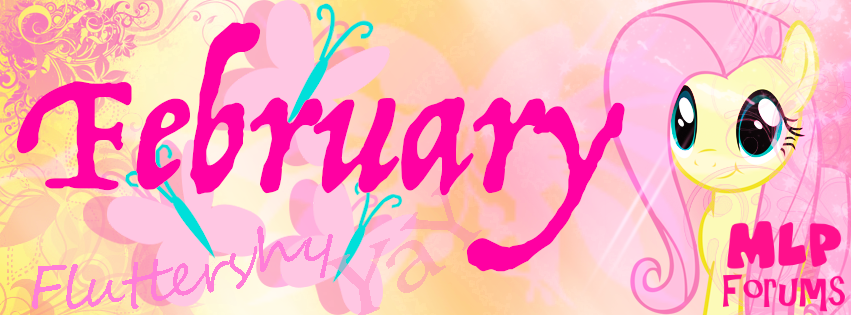

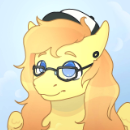
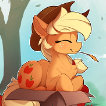

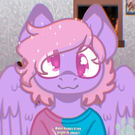
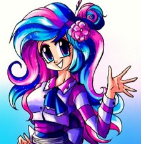


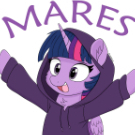
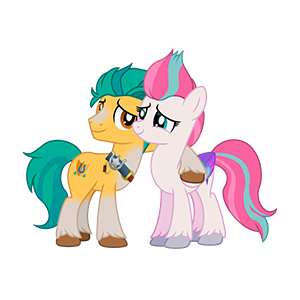

.thumb.jpeg.a9f2f78ddedd0d52943410dc9dfd753a.jpeg)



.thumb.jpg.3e3c5451240c85036b79cd757490df4f.jpg)
(1)_cropped.thumb.png.aeb58f13fdb7eab163a1fec3e68b1a71.png)



